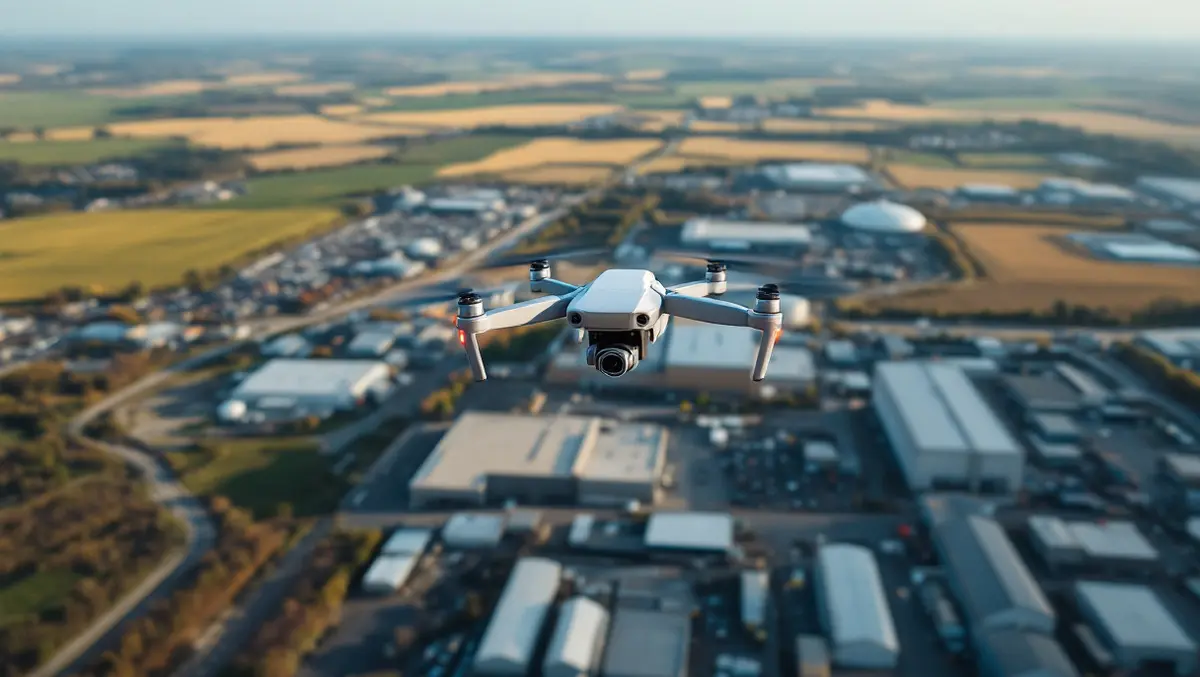
Commercial drone automation set to soar across industries
A new report by Forrester has revealed that 78% of automation decision-makers said their organisation has implemented or plans to implement aerial drone automation within the next year.
The Forrester report, titled The State Of Drones, 2025, highlights the growing interest in drone technologies across a range of sectors, including logistics, energy, construction, agriculture, and media, as these industries look to increase efficiency and address operational challenges.
In its definition, Forrester describes an aerial drone as "an unmanned aerial system, controlled remotely by a human operator or autonomously by onboard computers, that is designed to fulfil commercial tasks in indoor and outdoor environments for business and government organizations by performing functions like mapping, surveying, product delivery, surveillance, and inspections of machines and infrastructure."
Forrester's research draws on its 2024 Automation Survey and market analysis to assess the commercial readiness of drones, outline key use cases, and consider the regulatory and technical challenges that organisations may face during implementation.
One of the report's major findings is that drones can halve operational timelines in some cases. According to the study, autonomous drones equipped with AI-powered vision and navigation are streamlining activities such as field inspections, surveys, and surveillance. This technology reduces manual labour, speeds up project delivery, and can improve the accuracy of collected data.
The report also notes the role of advanced sensors and AI-powered analytics. Drones armed with high-resolution cameras, LiDAR, and edge computing options are capable of converting raw data such as aerial imagery into actionable intelligence. This, the report says, is particularly beneficial in industries like energy, insurance, and logistics, as it can support decision-making processes.
Sectors where operational hazards and fragmented data are significant concerns are emerging as early adopters. The report states that energy, telecom, construction, and agriculture are seeing immediate benefits from using drones for asset monitoring, mapping, and targeted pesticide application. Meanwhile, the logistics and insurance sectors are experiencing technical and regulatory challenges that have slowed adoption rates but show strong future potential.
The report draws attention to ongoing technical, regulatory, and economic issues that may hamper the scalability of these technologies. Payload and battery limitations currently restrict delivery drones to cargo weights under 2 kg, making them less viable for retail and healthcare deliveries on a large scale. Public anxiety about surveillance is also highlighted as a factor behind restrictive drone legislation in regions such as the US and Europe.
Charlie Dai, Vice President and Principal Analyst at Forrester, commented on the growing significance of drones for commercial use. "As physical automation evolves, aerial drones are no longer experimental — they're operational imperatives. Organisations must move beyond pilots and integrate drones into core processes to bridge data gaps, protect workers, and drive strategic outcomes. To fully realise the potential of drone technologies, leaders must align drone deployment with measurable business goals, regulatory engagement, and sustainable innovation."
The report concludes that while there are obstacles to wider adoption and scalability, drones are set to play a pivotal role in advancing automation and operational efficiency across multiple industries.


